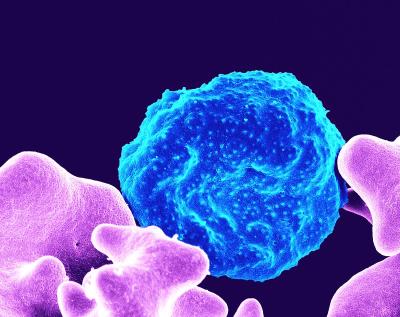NIAID-Funded Study Traces Evolution of Malaria Drug Resistance in E. Africa – Emergence of Artemisinin Partial Resistance Mutations Found Across Uganda
Emerging resistance to common malaria treatments in Uganda could be connected to inconsistent use of measures to control mosquito populations, according to new findings published in the New England Journal of Medicine. The trend is worrisome, the NIAID-funded scientists state, because resistance mutations they tracked are taking root and spreading. Researchers at the University of California at San Francisco (UCSF), funded in part by NIAID’s International Centers of Excellence for Malaria Research program, led the international collaboration.
Malaria is one of the most common and serious infectious diseases. The World Health Organization (WHO) estimates that about half of the world’s population is at risk of getting malaria, which is caused primarily by Plasmodium falciparum parasites spread through the bites of female Anopheles mosquitos. In 2021, WHO estimated that about 247 million people contracted malaria in 85 countries; about 619,000 people died. About 95% of cases and deaths were in Africa.
For decades a combination of measures has resulted in effective malaria control in Africa: preventing malaria transmission with bed nets treated with insecticides; spraying insecticides indoors; treating malaria with artemisinin-based combination medicines; and preventing malaria with other drugs.
Artemisinins – originally extracted from the sweet wormwood plant, but also now available synthetically – rapidly eliminate malaria parasites from the bloodstream. They are used in combination with other longer-lasting drugs to effectively treat malaria. Beginning in 2008, however, studies in Southeast Asia identified poor results from artemisinins and eventually from artemisinin-based combination malaria treatments. Scientists soon found the primary reason – a protein (PfK13) in P. falciparum had developed mutations that made it partially resistant to artemisinins.
Since then, scientists in Africa have watched for the same mutations to emerge. The NEJM study identified five of these mutations, each of which may lead to partial resistance, that have emerged in different parts of Uganda. Their work used data from malaria cases and annual patient surveillance throughout Uganda between 2014 and 2022.
They found that two of the five key mutations appeared in far northern Uganda in 2016-17. The mutations then spread across much of northern Uganda and nearby regions, appearing in up to 54% of cases in one district. The other three key mutations emerged in western Uganda in about 2021-22, with prevalence up to 20% to 40% in different districts.
The study notes that in parts of Uganda where indoor spraying stopped between 2014 and 2018, cases of malaria quickly surged. Likewise, the emergence of any of the five key resistance mutations also surged, suggesting that the emergence was aided by malaria epidemics in populations where malaria had previously been well-controlled.
The researchers have different theories about how and why the mutations emerged. Their leading hypothesis, which they have targeted for more study, is that in populations with a low level of immunity to malaria, an epidemic increases the likelihood that resistance will emerge. “In northern Uganda,” the study states, “this scenario occurred after the withdrawal of effective malaria control, leading to high incidence of malaria in a population with relatively low antimalarial immunity.” They also suggest that fluctuating malaria transmission contributed to the emergence of drug resistance in southwestern Uganda. They emphasize the importance of maintaining malaria control interventions, with attention to malaria outbreaks, to decrease the likelihood of emergence or spread of drug resistance.
Others working on the project with UCSF include scientists from the Infectious Diseases Research Collaboration and Makerere University in Uganda; the University of Tubingen in Germany; Brown University in Rhode Island; and Dominican University of California.
Reference:
M Conrad et al. Evolution of Partial Resistance to Artemisinins in Malaria Parasites in Uganda. New England Journal of Medicine DOI: 10.1056/NEJMoa2211803 (2023).


